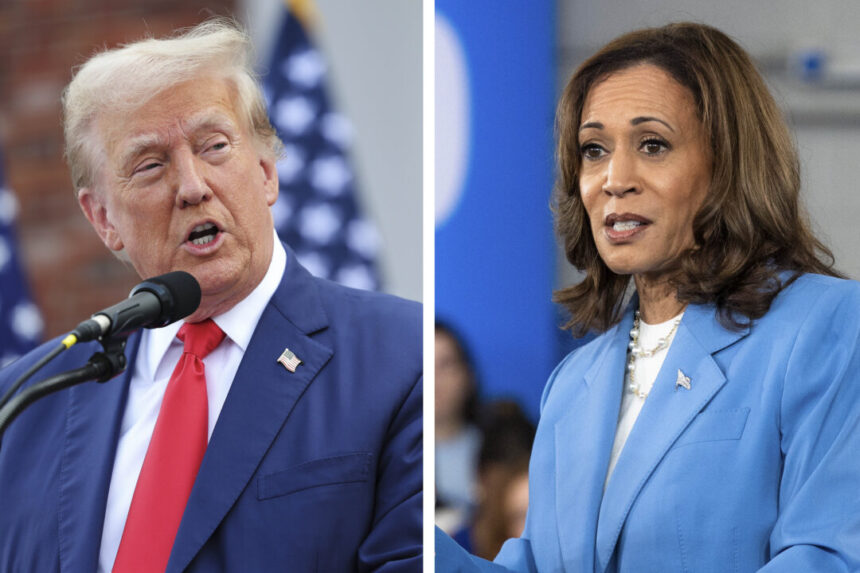Commentary
While free markets are often praised by economists in the Western world as the best way to distribute resources, non-competitive forces can hinder the effectiveness of the free market system in ways that are hard to address politically.
The proposed policies of the top two presidential candidates outline different approaches to handling issues related to international trade, industrial growth, the housing market, the operations of the Federal Reserve, and other important matters. It is crucial for well-informed citizens to carefully consider how these policies may impact various income groups, market segments, and the country’s debt situation when making their voting decisions.
Donald Trump seems to lean towards advocating for free markets more than Kamala Harris by reducing government involvement in many sectors. He aims to decrease taxes for individuals and businesses, ease restrictions on energy production, lessen environmental regulations, and restrict the Federal Reserve’s interventions in financial markets. He also plans to reduce government influence in education, including abolishing the Department of Education and potentially other agencies.
However, Trump does support certain government interventions if they benefit the economic interests of U.S. citizens. For instance, he calls for increased tariffs on imports from all countries, especially China, and proposes limits on credit card interest rates. Despite these exceptions, Trump generally opposes government price interventions in the domestic economy.
In contrast, Harris advocates for several measures that could be seen as “price controls” for the domestic economy. She wants to prevent corporate price gouging on grocery items, tackle pharmacy middlemen raising drug prices, and impose price limits on various drugs for a wide range of Americans.
She aims to use government tax and spending powers to support lower-income Americans at the expense of higher-income individuals. Harris plans to raise corporate and individual taxes for those earning over $400,000 annually, increase the capital gains tax, forgive student debt, expand Pell Grant availability, and cancel medical debt for many Americans. She also intends to maintain the Federal Reserve’s authority to influence outcomes through monetary policy.
Regarding tariffs, Harris views them as a form of “sales tax.” While they may temporarily raise prices, the long-term effects remain uncertain. Trump’s goal with tariffs is to protect American industry from cheap Chinese goods that have harmed U.S. manufacturing. The impact of tariffs will likely vary across industries.
Price controls can be challenging to enforce and often lead to black markets, favoring the unscrupulous and causing shortages. Regulatory capture poses a significant obstacle when implementing price controls, especially in industries like pharmaceuticals where lobbying influence is strong.
Understanding the winners and losers of Federal Reserve policies is crucial for voters. While inflation affects everyone, the consequences of anti-inflation measures must be carefully weighed. Some argue that Fed policies tend to benefit creditors over debtors during inflationary periods.
It is essential for voters to grasp the potential impacts of Fed actions and the policy differences between candidates to make informed choices that align with their values and beliefs.
The term “layoff” has been removed from various internet sources, such as Wikipedia, due to its negative connotations of poorer workers losing their jobs for the benefit of wealthier bankers.
The Humphrey–Hawkins Full Employment Act, which can still be found on Wikipedia, is well-intentioned but lacks the strong impact of the Federal Reserve’s monetary policy.
An important question arises: is inflation a more pressing issue than unemployment since inflation affects everyone while unemployment impacts a smaller group? This comparison is akin to saying the common cold is a more serious ailment than cancer simply because it affects more people. The complexities of Federal Reserve policy extend far beyond this question.
The idea of giving the president more influence over the Fed, as proposed by Trump and opposed by Harris, raises uncertainty. Political interference in the Fed could introduce new problems and destabilize the economy further. Ideally, any president would consider all perspectives when making monetary policy decisions.
Historically, targeting specific economic groups with monetary policies has led to unintended consequences. For example, Harris’s proposal of a $25,000 subsidy for first-time homebuyers may seem beneficial, but it raises concerns about potential housing market distortions and risks reminiscent of the 2007–2008 housing crisis.
Harris’s plan to build 3 million new homes requires careful oversight to ensure its success. Details such as contract allocation, funding sources, and product distribution need to be clearly outlined for voters to evaluate.
The likelihood of these proposed policies being enacted into law, given the current political landscape, is uncertain. Additionally, the impact of these policies on the existing $35 trillion federal debt is a crucial consideration.
Both Trump and Harris claim that their policies will boost the economy and reduce the national debt through different approaches. However, the long-term implications of deficit financing cannot be ignored.
A thorough discussion by the candidates regarding the federal debt implications of their policies would provide voters with valuable insight during this pivotal economic period.
(Note: The views expressed in this article are solely the opinions of the author and do not necessarily reflect those of The Epoch Times.)
Source link





